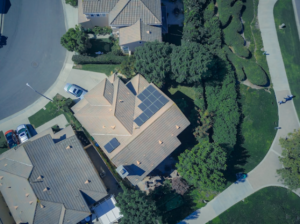When it comes to maintaining and enhancing the value of your home, understanding roof installation is crucial for every homeowner. Whether you’re considering a new roof or replacing an old one, the process involves careful planning and decision-making. A well-installed roof not only protects your property from the elements but also contributes to energy efficiency and aesthetic appeal. This blog will provide essential insights into the roofing installation process, helping you make informed choices about materials, contractors, and timelines. From selecting the right shingles to understanding warranties, here’s everything you need to know to ensure your roofing project is a success.

Selecting a Qualified Roofing Contractor
Choosing the right roofing contractor is a key step in ensuring the success of your roofing project. Start by researching local contractors with a solid reputation and plenty of positive reviews. Verify their credentials, including licensing and insurance, to protect yourself from liability. It’s also wise to ask for references and check their previous work to assess the quality and reliability of their services. Whether you need roofing installations in Denver or Miami, a reputable contractor understands local building codes and regulations, ensuring your project is compliant with all requirements. This staves off any potential issues or delays that could cost you time and money. Just remember, cheaper isn’t always better when it comes to selecting a contractor. Make sure to get quotes from multiple contractors and compare their offerings before making your final decision.
Understanding the Installation Process
Understanding the roof installation process is vital to ensure everything goes smoothly and according to plan. The first step involves removing the old roofing materials, which allows for an inspection of the underlying structure to identify any potential damage that needs repair. Once the old materials have been cleared, the roofer will lay down an underlayment or a protective barrier to shield your home from moisture.
Next, the roofing materials, such as shingles or tiles, are meticulously installed following the manufacturer’s guidelines to ensure durability and longevity. During installation, attention is paid to key areas like valleys, vents, and chimneys, where roofing materials need careful sealing to prevent leaks. Finally, a thorough cleanup of the site is conducted, ensuring all debris is removed and your property is left as tidy as before the project began. Familiarizing yourself with these steps helps set realistic expectations and allows you to properly monitor the progress of your roof installation.
Navigating Roofing Warranties and Guarantees
When investing in a new roof, understanding the nuances of warranties and guarantees is vital for protecting your investment. Most roofing warranties fall into two categories: manufacturer’s warranties and contractor warranties. Manufacturer’s warranties typically cover defects in the roofing materials themselves and can last anywhere from 20 years to a lifetime, depending on the product. It is important to thoroughly read and understand what is covered under these warranties, as they often include specific requirements for proper installation and maintenance.
On the other hand, contractor warranties focus on the workmanship involved in your roof installation. These warranties generally cover any issues related to the installation process, typically ranging from one to ten years. Be sure to inquire about the scope of the contractor’s warranty before hiring, as coverage can vary significantly between contractors. Also, confirm if they offer any additional guarantees for specific services like leak prevention or emergency repairs.

Managing Roofing Costs and Budgeting
Undertaking a roofing project can be a significant investment, so managing costs and budgeting effectively are paramount for a successful outcome. Begin by setting a clear budget that considers all potential expenses, such as materials, labor, permits, and any unexpected repairs. Understanding the scope of your project helps in preventing overspending and allows you to prioritize where to allocate funds. Seek detailed quotes from multiple contractors to compare pricing and services; this transparency enables you to find the best value for your money.
Additionally, consider the cost-to-value ratio of the materials you choose. While premium materials may have higher upfront costs, their longevity, and potential energy-saving benefits might offer better long-term savings. It’s also worth exploring financing options or rebates that your provider might offer, as well as insurance coverage that could subsidize part of your costs in case of damage or disaster. Being financially prepared and informed allows you to manage expenses efficiently while ensuring a quality roofing installation that enhances your property’s value.
The roof installation process is a critical aspect of homeownership that requires careful consideration and planning. By selecting a qualified roofing contractor, understanding the installation steps, being well-versed in warranties, and effectively managing costs, homeowners can ensure a successful and stress-free roofing project. Investing time in research and preparation not only leads to a high-quality roof that offers protection and aesthetic appeal but also enhances the overall value of your home. Remember, a well-maintained roof is an investment in the safety and longevity of your property, making it paramount to approach roofing projects with diligence and informed decisions.



